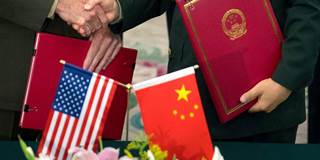Despite the US government’s recent upward revision to personal saving data, the overall national saving rate, which drives the current account, remains woefully deficient. And the major surplus countries – Germany, China, and Japan – have been only too happy to go along for the ride.
NEW HAVEN – In an increasingly interconnected global economy, cross-border trade and financial-capital linkages have come to matter more than ever. The current-account balance, the difference between a country’s investment and saving position, is key to understanding these linkages. The dispersion of current-account positions tells us much about the state of global imbalances, which are often a precursor of crises.
The same is true of trade tensions, such as those now evident around the world. Current-account disparities often pit one country against another.
Economies running current-account deficits tend to suffer from a deficiency of domestic saving. Lacking in saving and wanting to invest, consume, and grow, they have no choice but to borrow surplus saving from others, which gives rise to current-account and trade deficits with the rest of the world. The opposite is the case for countries with current-account surpluses. They are afflicted by subpar consumption, excess saving, and chronic trade surpluses.

NEW HAVEN – In an increasingly interconnected global economy, cross-border trade and financial-capital linkages have come to matter more than ever. The current-account balance, the difference between a country’s investment and saving position, is key to understanding these linkages. The dispersion of current-account positions tells us much about the state of global imbalances, which are often a precursor of crises.
The same is true of trade tensions, such as those now evident around the world. Current-account disparities often pit one country against another.
Economies running current-account deficits tend to suffer from a deficiency of domestic saving. Lacking in saving and wanting to invest, consume, and grow, they have no choice but to borrow surplus saving from others, which gives rise to current-account and trade deficits with the rest of the world. The opposite is the case for countries with current-account surpluses. They are afflicted by subpar consumption, excess saving, and chronic trade surpluses.